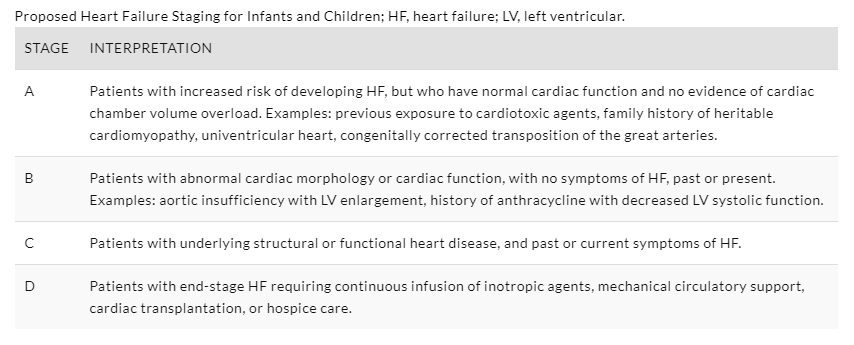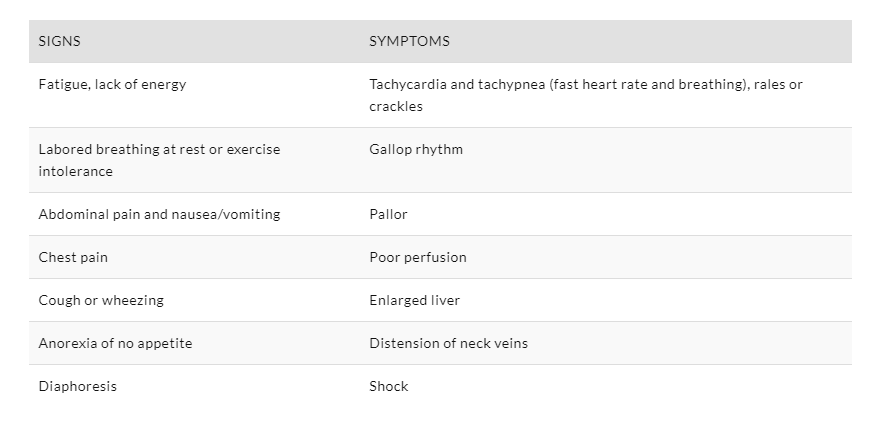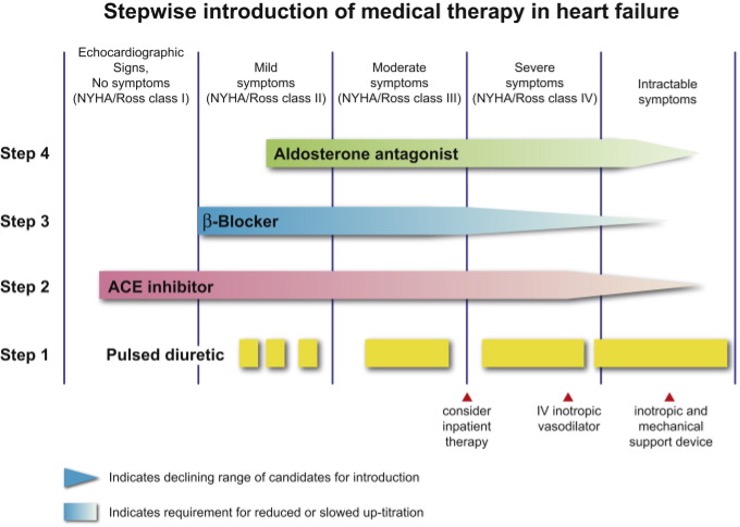By Santa J. Bartholomew M.D. FAAP, FCCM
Congestive Heart Failure in Children is distinctly different than adults and the etiologies of heart failure in children are very different. For the purposes of this article, we will define Congestive Heart Failure (CHF) as signs and symptoms related to ventricular dysfunction. There are a variety of classification and staging systems for heart failure but for children. The most used are the guidelines for children of the International Society for Heart and Lung Transplantation (ISHLT) seen in Table 1.
Table 1. Congestive Heart Failure in Children

How Do Children Get Heart Failure?
The cause of heart failure in children varies by age with congenital abnormalities occurring in infancy such as anomalous left coronary artery, critical aortic stenosis and coarctation of the aorta along with single ventricle disease. In these cases, left untreated the chamber of the heart becomes very enlarged and there is abnormal function of the heart in both systole and diastole. Inborn errors of metabolism in which the enzyme systems of the infant are abnormal from birth can also cause heart failure in the infant although more rarely than anatomic reasons. In these cases the heart may be hypertrophic or dilated.
Dilated cardiomyopathy is the most common cause of CHF in children and is often caused by a virus.
In children 2 years to 5 years old the most common causes of CHF are acute viral myocarditis (infection of the muscle of the heart), inherited cardiomyopathy, cardiomyopathy induced from an abnormal beating of the heart and Kawasaki disease. In children older than 5 years old these causes still exist and are joined by Rheumatic heart disease, severe chronic anemia, hypothyroidism and systemic lupus erythematosus (SLE).
Dilated Cardiomyopathy
Dilated cardiomyopathy is the most common cause of CHF in children and is often caused by a virus. The most common viruses are enterovirus, parvovirus, and adenovirus. Infections with HIV can also cause cardiomyopathy and CHF in children. Non-infectious causes include drugs of abuse and toxins but are less frequent than viral infections. Kawasaki is also a cause of large coronary artery aneurysm and can lead to myocardial ischemia and heart failure in children when not diagnosed and treated with efficiency, this also often occurs after viral infection in children. In boys there are also hereditary X-linked caused such as Duchenne and Becker muscular dystrophy.
Clinical Features: Although causes for CHF and cardiomyopathy may vary the clinical features of heart failure in children are the same despite the etiology. These symptoms may be confusing as they are often like other childhood diseases.
Table 2. Signs and Symptoms of Heart Disease

Diagnosis of Heart Failure
Although diagnosis of heart failure is clinical the evaluation of the cause include electrocardiogram, echocardiography, lab markers such as BNP, proBNP, assessment of kidney function and then evaluation for viruses which may include heart muscle biopsy in the cardiac catheterization lab.
Treatment of Heart Failure
Most data about the treatment of CHF in chidren is extracted fro adult literature from adults suffering heart failure from ischemic heart disease. There are concensus statements by the AHA, ISHLT and Canadian Cardiovascular Society to help evaluate the quality of available data and assist clinician in decision making . Below is an example of these concensus statements from the Caandian Cardiovasular Society. The etiology of cardiomyopathy must be identified and treated primarily if possible such as reimplanting an anomalous coronary artery then medical treatment of the heart muscle to help in funtional recovery. Depending on age there are an assortment of assist devices for the heart such as ECMO and left ventricular assist devices and these typically act to assist the function of a heart that is failing medicall therapy while the chils awaits transplant.





